Halyomorpha halys (brown marmorated stink bug)
Identity
- Preferred Scientific Name
- Halyomorpha halys (Stål)
- Preferred Common Name
- brown marmorated stink bug
- Other Scientific Names
- Halyomorpha brevis
- Halyomorpha mista
- Halyomorpha remota
- Pentatoma halys Stål
- International Common Names
- Englishyellow-brown marmorated stink bugyellow-brown stink bug
- Frenchpunaise diabolique
- Local Common Names
- GermanyMarmorierte Baumwanze
- English acronym
- BMSB
- EPPO code
- HALYHA (Halyomorpha halys)
Pictures
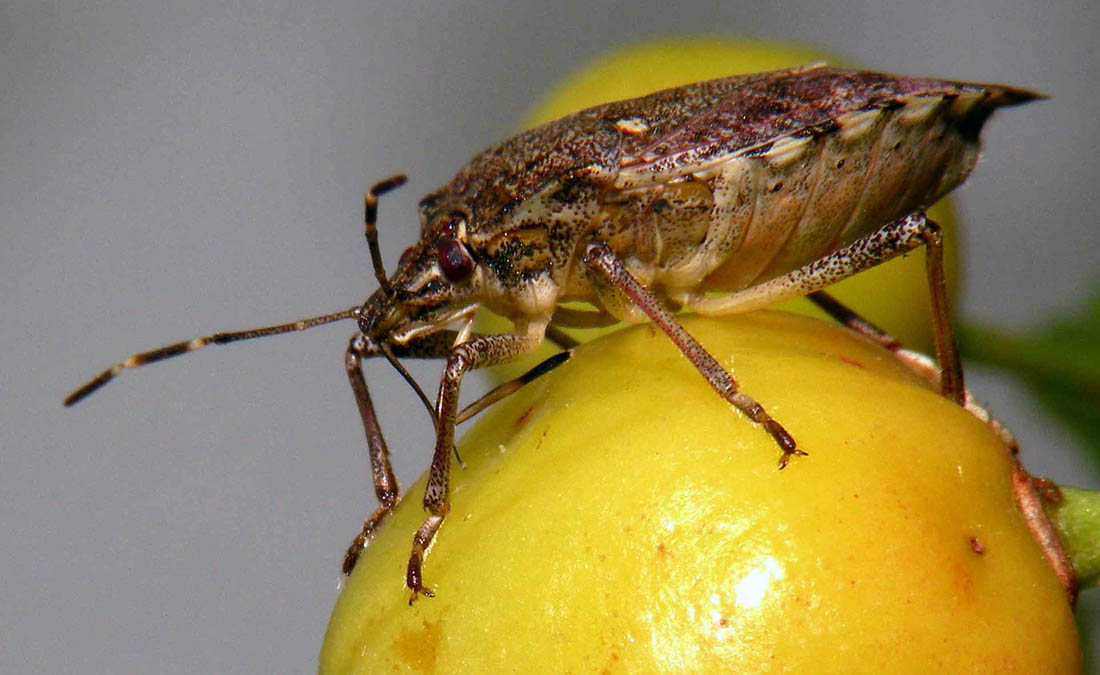
Adult
Halyomorpha halys (brown marmorated stink bug); adult feeding on a cherry.
©CABI Switzerland - 2012
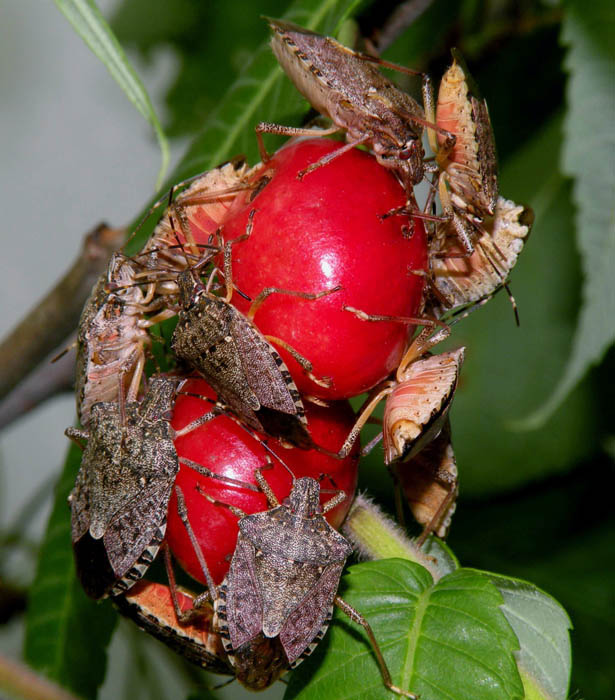
Adults
Halyomorpha halys (brown marmorated stink bug); adult feeding on cherries.
©CABI Switzerland - 2012
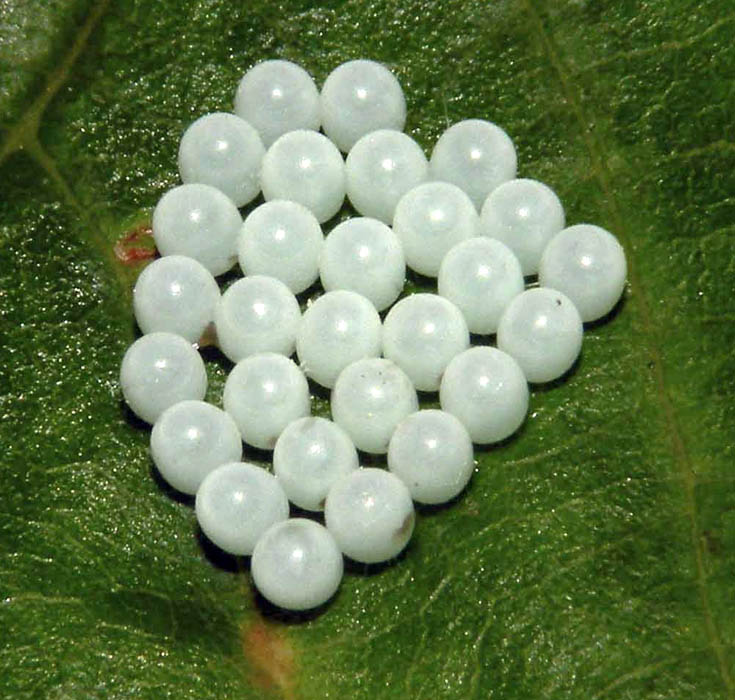
Egg mass
Halyomorpha halys (brown marmorated stink bug); egg mass.
©CABI Switzerland - 2012
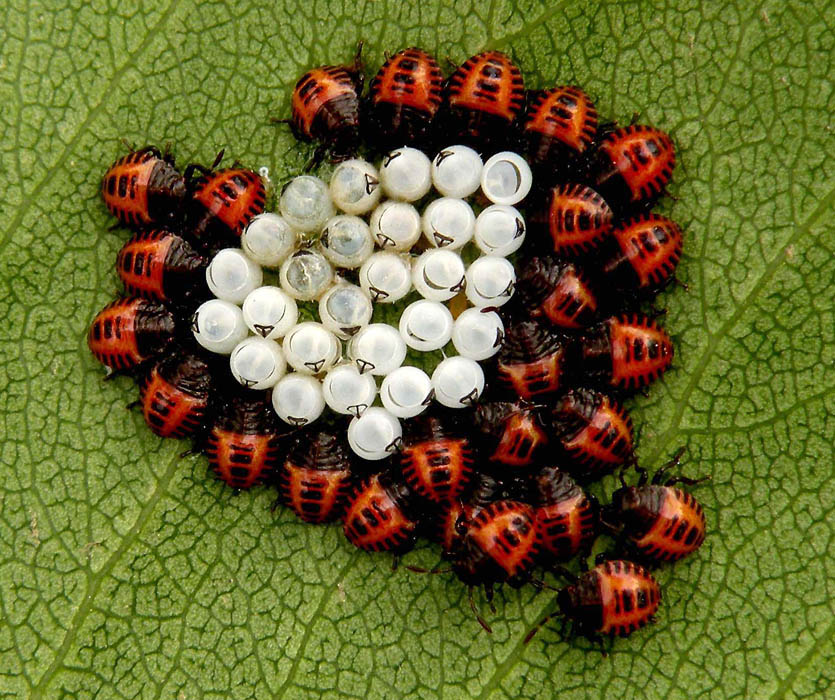
Nymphs
Halyomorpha halys (brown marmorated stink bug); newly emerged nymphs around egg mass.
©CABI Switzerland - 2012
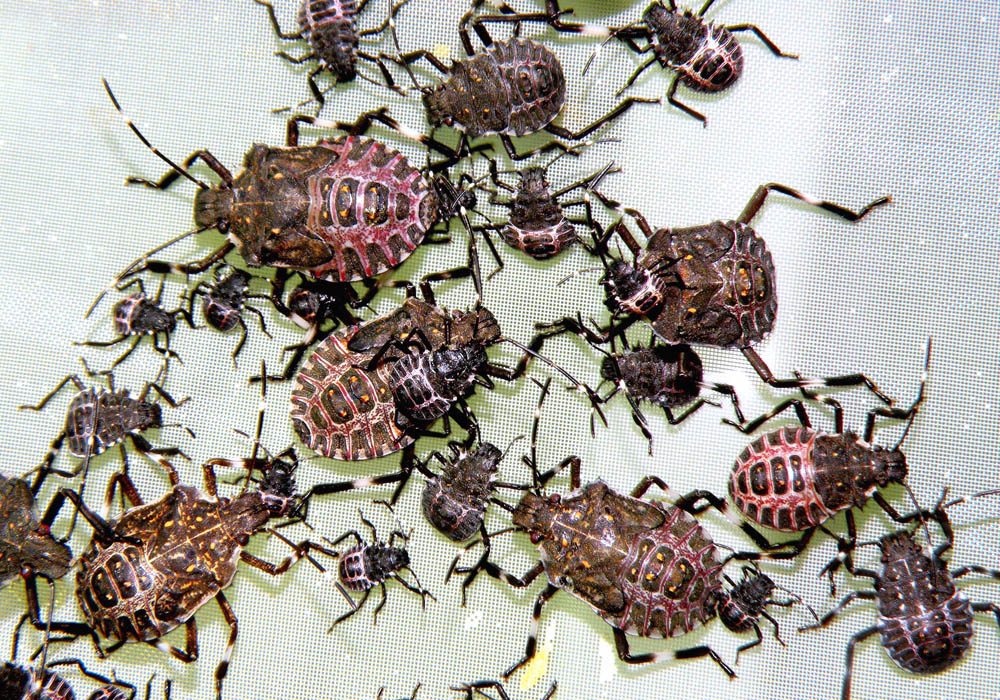
Nymphs
Halyomorpha halys (brown marmorated stink bug); various nymphal instars.
©CABI Switzerland - 2012
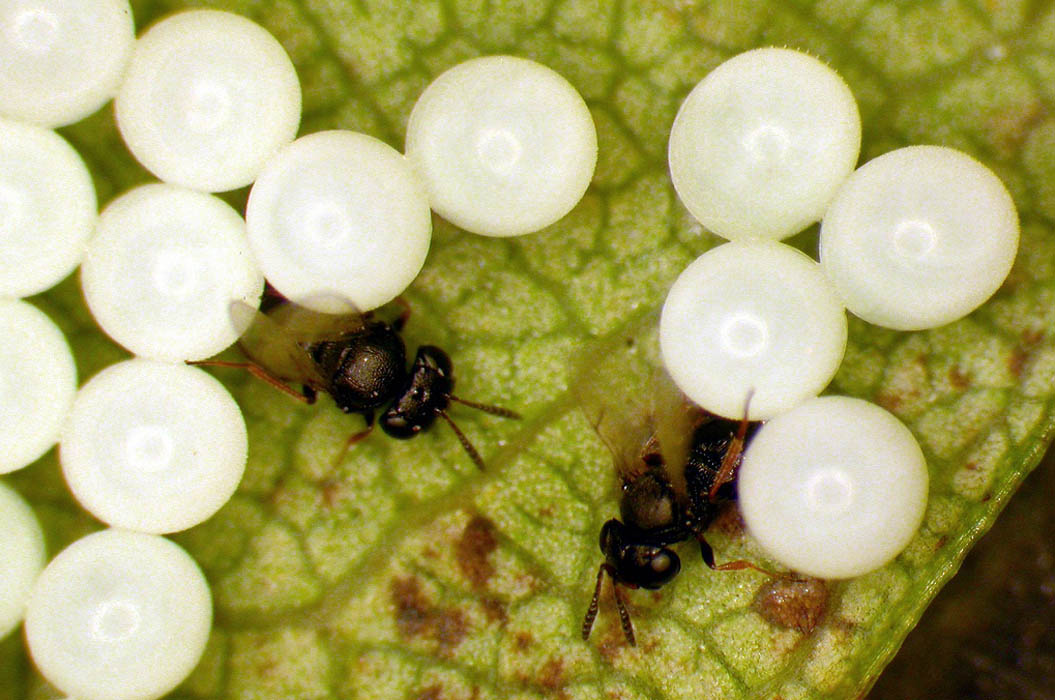
Natural enemy
Halyomorpha halys (brown marmorated stink bug); natural enemy - parasitoid wasps (Trissolcus japonicus) parasitizing eggs of the brown marmorated stink bug.
©CABI Switzerland - 2012

Brown marmorated stink bugs feeding on cherries
CABI
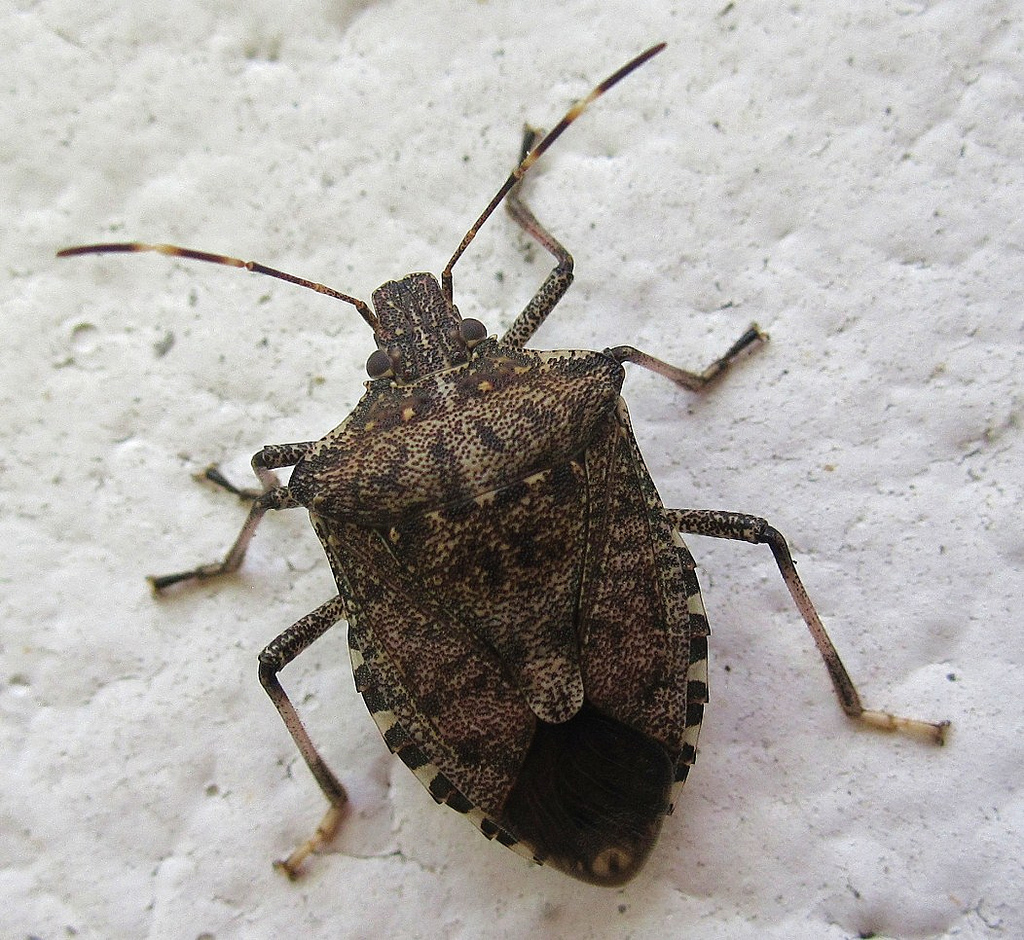
Halyomorpha halys
Halyomorpha halys
Kurt Andreas
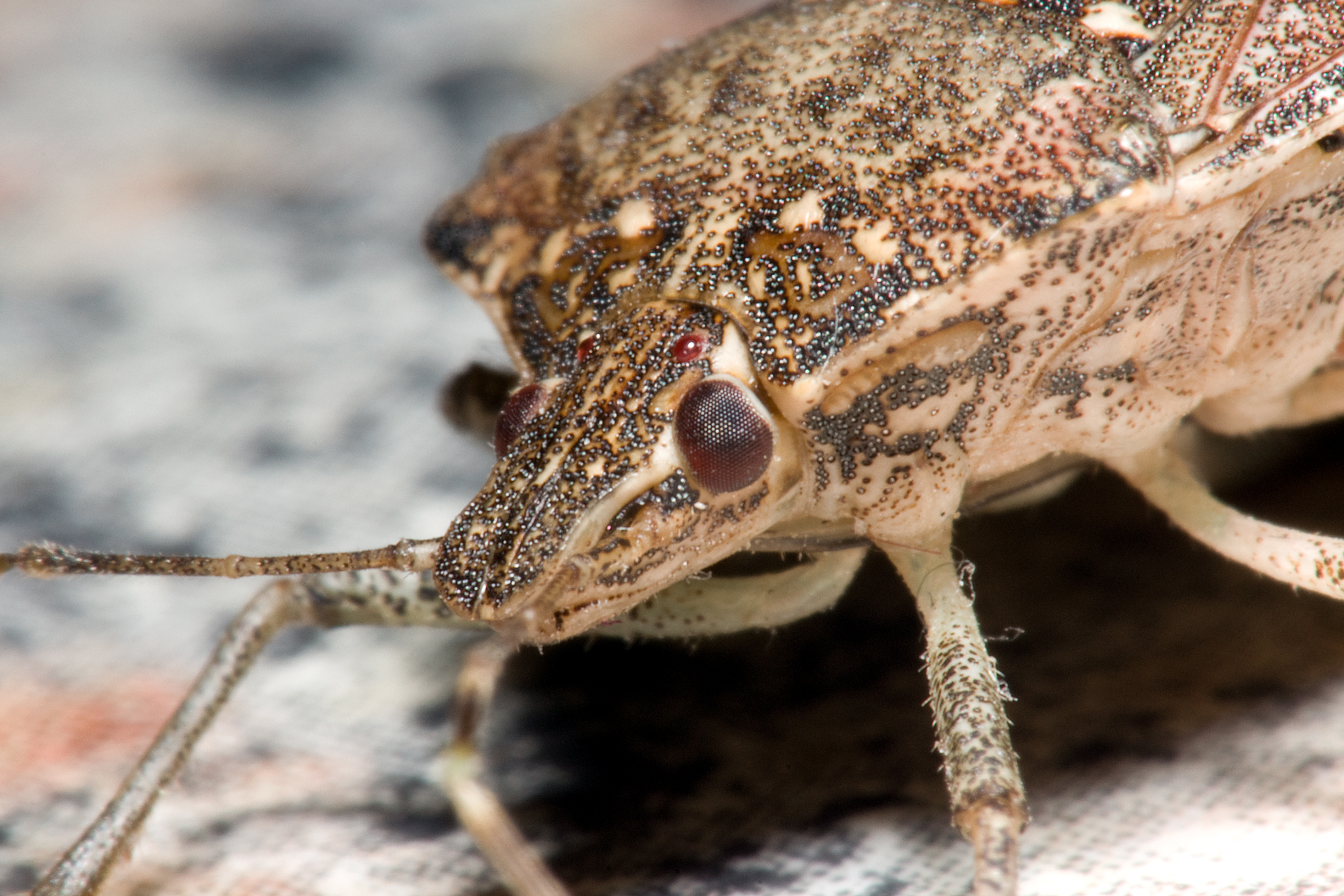
SONY DSC Halyomorpha halys
Halyomorpha halys
(c) 2011 e_monk rjSchuerger

Halyomorpha halys
CABI
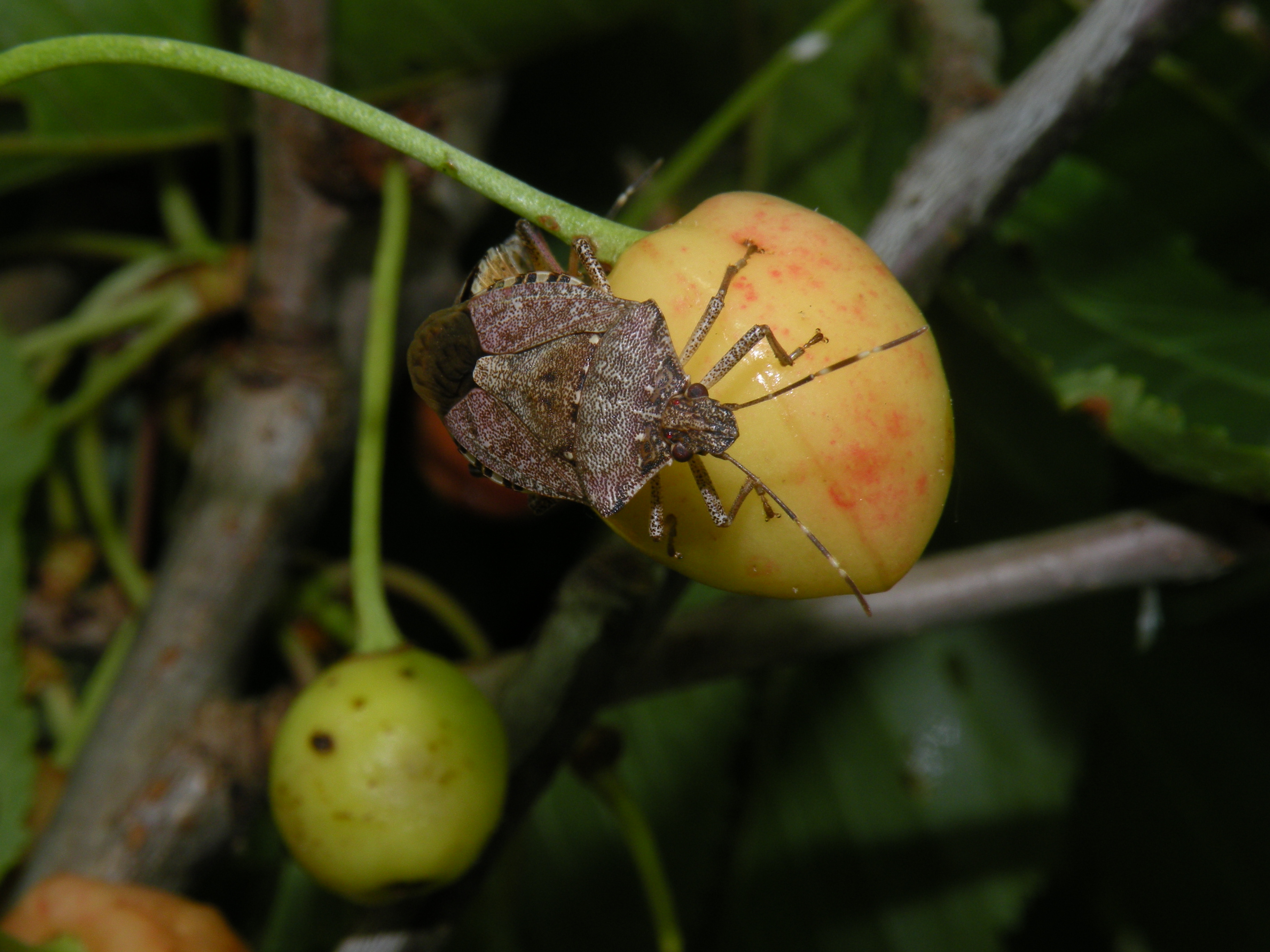
Halyomorpha halys
An adult of the brown marmorated stinkbug feeds on an unripe cherry.
CABI
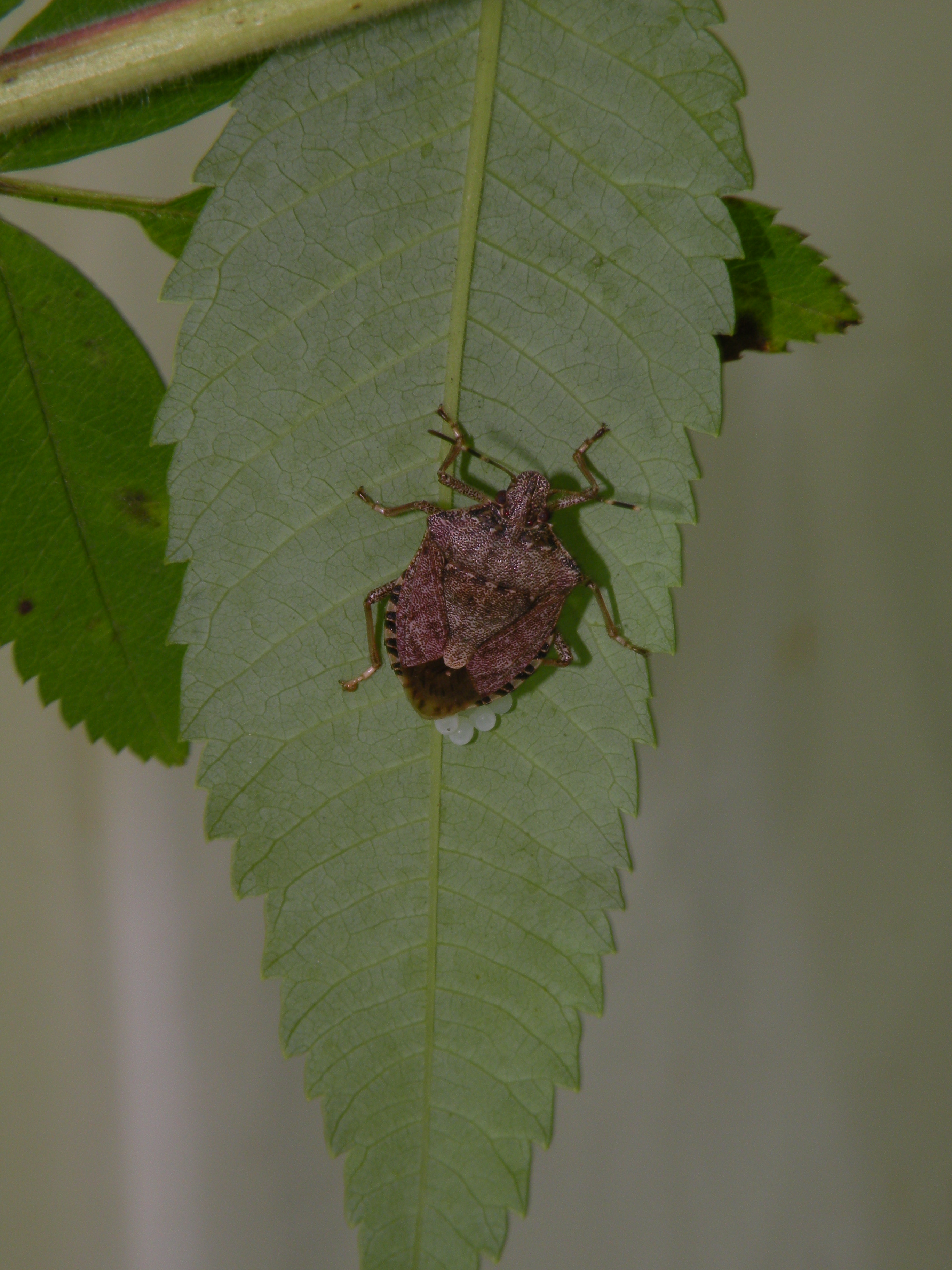
Halyomorpha halys
Halyomorpha halys laying eggs
CABI

Halyomorpha halys
CABI
Distribution
Host Plants and Other Plants Affected
Symptoms
Adults and nymphs cause feeding damage. On tree fruits, feeding injury causes depressed or sunken areas that may become 'cat-faced' as the fruit develops. Late season injury causes corky spots on the fruit. Feeding may also cause fruiting structures to abort prematurely. Similar damage occurs in fruiting vegetables such as tomatoes and peppers, although frequently later in the season. Feeding can cause failure of seeds to develop in crops such as maize or soyabean. There is frequently a distinct edge effect in crop plots as H. halys has an aggregated dispersion and moves between crops or woodlots. In soyabeans, this can result in a 'stay green' effect where pods fail to senesce at the edges due to H. halys feeding injury.
List of Symptoms/Signs
| Symptom or sign | Life stages | Sign or diagnosis |
|---|---|---|
| Plants/Fruit/abnormal shape | ||
| Plants/Fruit/discoloration | ||
| Plants/Fruit/external feeding | ||
| Plants/Fruit/lesions: scab or pitting | ||
| Plants/Leaves/external feeding | ||
| Plants/Leaves/necrotic areas | ||
| Plants/Whole plant/external feeding |
Prevention and Control
Susceptible Crops
Soyabean. Research has revealed three H. halys characteristics that are allowing for development of better management practices in soyabean: H. halys tends to invade soyabean fields during the R4 plant growth stage (fully elongated pods) to R6 (fully developed seed) and does the most crop injury by feeding on developing seed during R5; feeding injury is similar to that caused by native stink bug species; and populations typically infest only field edges, especially those bordering maize fields, woody edges or farm structures. While still under development, tentative thresholds are 1-2 H. halys/row foot, or 5 per 15 sweep-net sweeps. Scouting field edges is recommended during R4-R6 and making field edge-only treatments if populations exceed tentative thresholds. Several insecticides provide control, and a single field edge-only treatment is effective, if applied at the right time.
Maize. H. halys populations are highest ( > 3 per ear) during ear formation, the milk (R3) and soft dough (R3-R4) stages. Populations are typically highest within 12 m of field edges and decrease significantly toward the centres of fields. The highest populations are in maize fields bordering woods, followed by alfalfa, buildings and sorghum with the fewest in fields adjacent to open areas. Economic thresholds are under development.
Vegetables. Research shows that the vegetables most at risk to H. halys damage are sweetcorn, most varieties of pepper, tomato, okra, aubergine and edible beans. Plants are typically attacked in late summer when fruiting structures are present. Several foliar-applied insecticides provide effective control including pyrethroids (i.e., bifenthrin, permethrin and fenpropathrin); neonicotinoids (dinotefuran) and acephate (on peppers) (Kuhar et al., 2012 b, c, d, e). Neonicotinoids applied as a soil drench or via drip chemigation provide control for up to 14 days after treatment in vegetables such as pepper and tomato.
Tree fruit. H. halys adults can move into orchards at any time. Stone fruit, particularly peaches and nectarines are vulnerable in the early season, but the majority of fruit injury to pome fruit occurs later in the season. It takes several weeks for feeding injury on apple to appear; injury close to harvest can be expressed after harvest in cold storage. Issues with PHI (pre-harvest intervals) in mixed apple blocks severely restrict the availability of most insecticides used for control in the USA. Effective control can be achieved with applications of neonicotinoids and pyrethroids (Leskey et al., 2012b). Field and laboratory assays indicate that residual activity is limited. In general, damage in orchard crops has been mitigated by increases in insecticide applications against H. halys (Leskey et al., 2012a). This practice can disrupt IPM programmes, causing outbreaks of secondary pests such as European red mites, woolly apple aphids and San Jose scale. In general, overwintered H. halys populations are easier to kill with insecticide applications than the new generation adults present later in the season.
Biological Control
The egg parasitoid Anastatus has been mass-reared in the laboratory for experimental field trials in China (Hou et al., 2009) but is not yet widely applied. The role of indigenous natural enemies, primarily invertebrate predators and hymenopterous parasitoids, in the control of H. halys in crops, orchards and ornamentals surveyed in North America in Maryland, Delaware and Pennsylvania is highly variable. In Maryland, predators contributed ~40-70% of H. halys egg mortality found in some maize and soyabean plots, respectively. In Pennsylvania orchards, an estimated 25% of H. halys egg mortality is due to predation by Coccinellidae, particularly Harmonia axyridis, and earwigs (Forficulidae). In addition, late H. halys instars comprise the majority of nest provisioning by sand wasps (Crabronidae), up to 96% of discovered nests in orchards (Biddinger, unpublished data). Thus, species composition and attack rates of H. halys egg masses by native egg parasitoids appear to be highly variable depending on the crop or ecosystem studied. On the basis of the considerably higher rates of parasitism reported for Trissolcus spp. in Asia, these species are currently being evaluated in quarantine facilities in the USA as candidate agents for possible field releases.
Monitoring and Surveillance
Black light traps have been used to track H. halys activity in Japan (e.g., Moriya et al., 1987) and New Jersey. Relative pest pressure and spread of H. halys throughout New Jersey have been successfully tracked and documented using a network of black lights (Nielsen et al., 2013). In addition, baited black pyramid traps can be used to monitor H. halys (Leskey et al., 2012a). Khrimian et al. (2008) confirmed that the aggregation pheromone of Plautia stali, methyl (2E,4E,6Z)-decatrienoate (Sugie et al., 1996), is cross-attractive to H. halys, as reported in Asia (Tada et al., 2001a, b). However, adults are reliably attracted only late in the season, though nymphs are attracted season-long. In addition, the aggregation pheromone has been identified for H. halys and includes (3S,6S,7R,10S)-10,11-epoxy-1-bisabolen-3-ol and (3R,6S,7R,10S)-10,11-epoxy-1-bisabolen-3-ol (Zhang et al., 2013). These stimuli can be used in combination with pyramid-style traps to monitor presence, abundance and seasonal activity of H. halys.
Impact
In 2008-2009, increasing H. halys populations in the mid-Atlantic region of the USA caused late-season problems to tree fruit (Leskey and Hamilton, 2010a) though H. halys was not a widely recognized pest until late in the 2010 season. To date, H. halys has been recorded in many important USA agricultural production regions. H. halys distribution has continued to spread in the USA and has recently been recorded in orchard crop production regions in Oregon (Wiman et al., 2013) and could spread to other major production regions of similar crops throughout much of North America (Zhu et al., 2012). Susceptible crops in the USA where the bug is present are worth > $40 billion (NASS, 2013).
Nuisance impacts are especially problematic in rural areas, and have been reported in many urban and metropolitan regions. In the autumn, H. halys moves to structures, often by the thousands, generating numerous complaints (Inkley, 2012). Similar to the impacts on commercial growers, homeowners are also experiencing damage to backyard fruit and vegetable gardens.
H. halys attacks tree fruit (Nielsen and Hamilton, 2009a; Leskey et al., 2012a), small fruit, vegetables (Kuhar et al., 2012a), tree nuts (Hedstrom et al., 2013), ornamentals (Martinson et al., 2013) and row crops (Nielsen et al., 2011; Owens et al., 2013). In tree fruit, economic damage due to H. halys has resulted in increased production inputs and secondary pest outbreaks (Leskey et al., 2012a). In some cases, up to four-fold more pesticides were applied in affected fruit orchards (Leskey et al., 2012a). An outbreak in 2010 in the mid-Atlantic region resulted in > $37 million losses to apple alone and some stone fruit growers lost 90% of their crop (Leskey and Hamilton, 2010 a, b). Even unnoticeable populations in tree fruit may cause significant crop losses of up to 25% (Nielsen and Hamilton, 2009a). Tuncer and Ecevit (1997) and Tuncer et al. (2005) found that indigenous stink bugs in Turkey cause up to 3% direct crop loss to hazelnut. Should a similar scenario unfold in nut production areas in the USA, this may result in $200 million losses to tree nuts annually. Vegetables most at risk are sweetcorn, peppers, tomato, okra, aubergine, asparagus, cucurbits, crucifers and edible beans. Damage exceeding 50% is common under heavy infestations. With the exception of early sweetcorn, which may be damaged in early July, most vegetable crops are attacked from late July to September (Kuhar et al., 2012a). Taint and contamination of harvested fruit may also be an issue, particularly for small fruit and grapes. In wine made from H. halys-contaminated grapes, trans-2-decenal was the main taint compound (Mohekar et al., 2013) associated with H. halys. In some cases taint from stink bugs is transient and does not survive the fermentation/bottling process (Fiola 2012). Nevertheless, wines containing certain levels of this compound were perceived to be inferior compared to uncontaminated wines (Tomasino et al., 2013a, b). H. halys has been successfully removed from clusters just before harvest in order to prevent 'stink bug taint' (Pfeiffer et al., 2012).
To date only a single incidence of economic damage on pepper crops has been reported in Europe from the Canton Aargau in Switzerland (Sauer, 2012).
Information & Authors
Information
Published In
Copyright
Copyright © CABI. CABI is a registered EU trademark. This article is published under a Attribution-NonCommercial-NoDerivatives 4.0 International (CC BY-NC-ND 4.0)
History
Published online: 4 October 2022
Language
English
Authors
Metrics & Citations
Metrics
SCITE_
Citations
Export citation
Select the format you want to export the citations of this publication.
EXPORT CITATIONSExport Citation
View Options
View options
Get Access
Login Options
Check if you access through your login credentials or your institution to get full access on this article.


